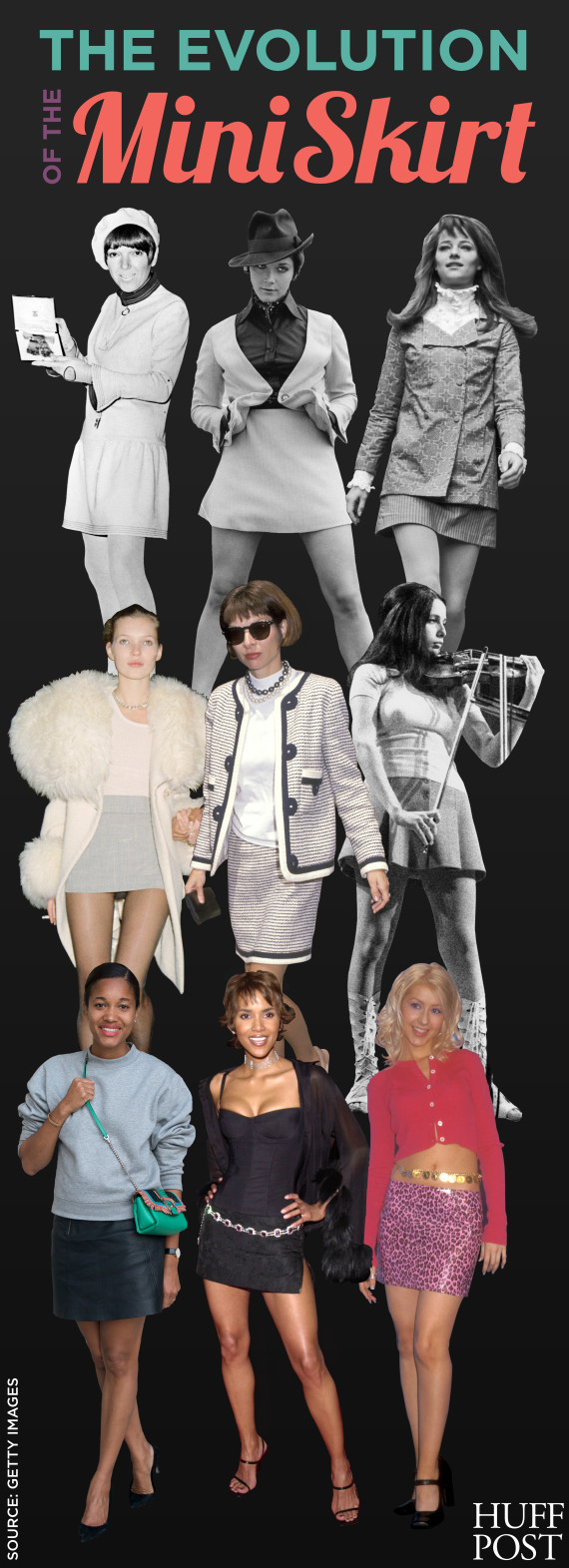There are many different fashion trends that defined the 1960s, but there's one that sticks out the most: the miniskirt.
The origins of the teeny-weeny skirt are debatable (archeologists unearthed figurines from between 5400 and 4700 B.C.wearing shorter hems). Modern history credits designer Mary Quant as a pioneer who had women wearing minis all over the world. Her revolutionary creations gave young girls a way to express their sexuality and fashion sense. After all, she famously said '60s style should be "arrogant, aggressive and sexy."
Where there's sex appeal, there's controversy. Major designers like Coco Chanel and Christian Dior were initially against the trend, Chanel even deemed them "just awful." The Netherlands banned the skirts for a limited time and model Jean Shrimpton caught a lot of flack for wearing a mini without tights to the 1965 Melbourne Cup Carnival.
By 1969, a revert back to modest hemlines seemed to signal the end of the mini. Though maxis were on the rise, women still cared about miniskirts (they even protested in support of the short garments). Since then, they've thrived.
In the '80s, Vogue editor-in-chief Anna Wintour made matching minis and suit jackets one of her signature looks. '90s runways adapted the piece of clothing and inspired celebrities such as Christina Aguilera to make it a red carpet staple.
In more recent years, miniskirts were banned in Uganda; a British lawmaker suggested miniskirt-wearers were at an increased risk for sexual assault. But they were also shortened, lengthened and widely accepted as a top sartorial choice amongst the street style crowd.
Look below to see how miniskirts have evolved since the 1960s.

Art by Tiara Chiaramonte.
Additional reporting by Sandra Lorenzo.

